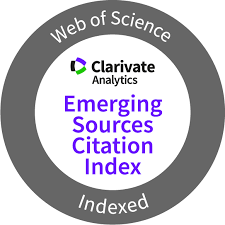Converting Municipal Solid Waste into energy
Keywords:
Waste to Energy, Renewable Energy, Municipal Solid Waste, Gasification, Batch Oxidation SystemAbstract
Given Uruguay’s energetic situation, where its main energy sources are from hydroelectric and thermal power from fossil fuels, it is important to consider other energy sources such as Energy from Waste. Waste to Energy (WTE) or Energy from Waste is a Municipal Solid Waste (MSW) management system, which results in an appropriate and sustainable use of the waste which cannot be efficiently recycled or reused. This article
overviews the different WTE alternatives and proposes a concrete small-scale application for the city of Paysandú.
Downloads
References
[2] Cheng, H.; Hu, Y. Municipal Solid Waste (MSW) as a renewable source of energy: Current and future practices in China, Bioresource Technology, 2010. 101: 3816-3824.
[3] Lund, H.; Muenster, M. Comparing Waste-to-Energy technologies by applying energy system analysis, Waste Management, 2010. 30: 1251-1263.
[4] Themelis, N.J. Recovering energy from Waste - PART A:MSW Management in the City of Buenos Aires, Argentinaand Potential for a Waste-To-Energy Plant, Columbia University, Agosto 2011.
[5] Gidarakos, E.; Havas, G.; Ntzamilis, P. Municipal solid waste composition determination supportingthe integrated solid waste management system in the island of Cretes, Waste Management, 2006. 26: 668-679.
[6] Tchobanoglous, G.; Theisen, H.; Vigil, S. Integrated Solid Waste Management: Engineering Principles and Management, 1993, McGraw-Hill.
[7] Intendencia Municipal de Paysandú, Bases para un Plan Estratégico de Desarrollo, 1998, disponible en http://www.paysandu.com/promocionydesarrollo/470.htm, último acceso en julio 2011.
[8] CEPIS, OPS, Análisis Sectorial de Residuos Sólidos en Uruguay, 1996, disponible en http://www.bvsde.paho.org/eswww/fulltext/analisis/uruguay/uruguay4.html, último acceso en julio 2011.
[9] Badami, M.; Mittica, A.; Poggio, A. MSW Incineration Capacity Evaluation for the Province of Turin (Northern Italy), ConferenciaNorteamericana de WTE (NAWTEC16), 2008.
[10] Department of Energy and Climate Change - UK. Combined Heat and Power Focus - What is Combined heat and power?, disponible en http://chp.decc.gov.uk/cms/what-is-chp, último acceso en mayo 2012.
[11] Fernández, J. La Basura como recurso energético. Situación actual y prospectiva en México, Boletín del Instituto de Investigaciones, Enero – Marzo 2011.
[12] Saidur, R.et al. A review on biomass as a fuel for boilers, Renewable and Sustainable Energy Reviews, 2011, 15(5): 2262-2289.
[13] El Espectador, Claves Sanduceras, disponible en http://www.espectador.com/1v4_contenido.php?id=40133&sts=1, último acceso en julio 2011.
[14] Greenenergy Solutions, inc., Sistema cBOS, disponible en http://www.greenergyph.com/cbos.html, último acceso en mayo 2012.
[15] Scottish environment protection agency. Permit to operate a 'PART A' installation. Operator:ScotGen(Dumfries)Ltd..http://www.sepa.org.uk/air/process_industry_regulation/pollution_prevention__control/public_participation_directive/ppd_consultations/idoc.ashx?docid=cd5ad028-0aed-4823-ac2a-c5f4227acc2a&version=-1.
[16] Sheepbridge Resource Park Limited. Determination of an application for an environmental permit under the environmental permitting (England & Wales) regulations 2010. http://www.againstincineration.org.uk/wp-content/uploads/2010/09/Sheepbridge-FINAL-DD-09-
September-10.pdf.
[17] Pacific Heat and Power, Heat Recovery, disponible en http://www.pacificheatandpower.com/index.php/organic_rankine_cycle_turbines, último acceso en mayo 2012.
[18] Programa de las Naciones Unidas para el Desarrollo, Recursos movilizados por el PNUD para la ejecución de proyectos de desarrolloPeríodo 2007 – 2011, disponible en http://www.undp.org.uy/pnudUruguay.asp, último acceso en agosto 2012.
[19] Themelis, N.J.; Diaz Barriga, M.E. Estudio De Pre-Factibilidad Técnica Y Económica Para La Instalación DeCapacidad De Generación De Energía A Partir De Residuos (WTE) en Uruguay, Themelis Associates, Enero 2012.


















